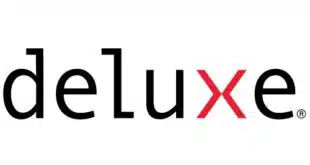Fraud losses will total $2.6 billion in 2004 for Internet merchants, 37% higher than last year, with smaller merchants suffering the worst fraud. That's according to the sixth annual survey of online fraud from CyberSource Corp., a Mountain View, Calif.-based transaction gateway for e-commerce sites. The survey, which gathered responses from 348 online merchants in the second half of September, reveals that the $700 million increase in losses stems chiefly from steadily rising e-commerce revenue, since fraud as a fraction of total sales is flat, 1.8% compared to 1.7% in last year's survey. Companies with annual Web revenues between $500,000 and $5 million are sustaining the highest fraud rate?2.5%, up from 1.9% in 2003. The fraud rate for companies with revenues between $5 million and $25 million is 1.5%, the same as last year, while companies with revenues above $25 million report a rate of 1.1%, down a few ticks from 1.3% last year. “Most companies achieving high levels of growth over a number of years acquire a level of sophistication in fraud prevention that renders the problem more manageable,” said Doug Schwegman, director of market intelligence at CyberSource, in a statement. Not surprisingly, higher-ticket items are most subject to fraudulent transactions. The median price of fraudulently ordered merchandise is $150, according to the survey, compared to a median of $100 on valid transactions. International sales are also more likely to be fraudulent. Merchants that accept orders from outside North America report rejecting more than 13% of them on suspicion of fraud, while of those orders accepted, 3.8% turn out to be fraudulent, almost three times the rate for all orders. The survey also casts light on other costs of fraud, including the loss of legitimate orders rejected on suspicion of fraud. Rejection rates this year are almost 6%, up from 4.6% in 2003's survey, implying that merchants reject more than four orders on suspicion for every one that is actually fraudulent. Fraud management, especially manual review, is also sapping merchant profits. Seventy-three percent of merchants report they are manually examining sales, up from 65% last year. Of all orders, 27% are being manually checked, compared to 23% last year. The most common fraud-management tools online merchants reported using are manual review, address verification, and matching of CVNs, the card-verification code printed on card-signature panels. The fraction of merchants reporting they have adopted the card networks' authentication systems, Visa's Verified by Visa and MasterCard's SecureCode, is 25%, up from 19% last year, while another 31% say they plan to implement these systems next year. Other technologies ranking high in merchants' adoption plans are commercial fraud-screening and risk-scoring services (28% use, 19% plan to adopt) and geo-location systems (31% and 22%). The survey also gathered data on types of payments accepted. Ninety-seven percent report accepting credit cards, followed by 21% taking electronic checks on the automated clearing house, 19% accepting PayPal, 17% taking gift cards, and 7% accepting Bill Me Later, a non-card credit-based payment system from I4 Commerce Inc. Some 23% say they take private label cards or other payment types. The merchants that responded to the survey account for $20.3 billion in online revenue, or 14% of all Internet sales. Half of them are CyberSource clients.
Check Also
Mastercard Looks to Support Stablecoins in a Deal With Wallet Provider MoonPay
The big card networks have worked for several years to exploit the growing business of …





